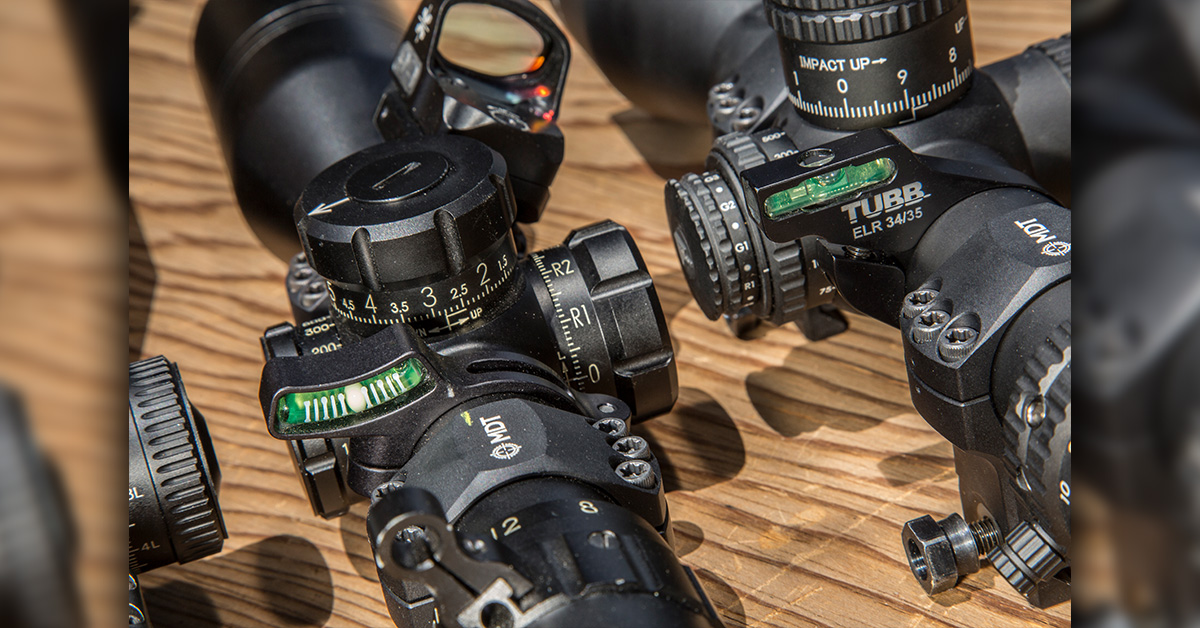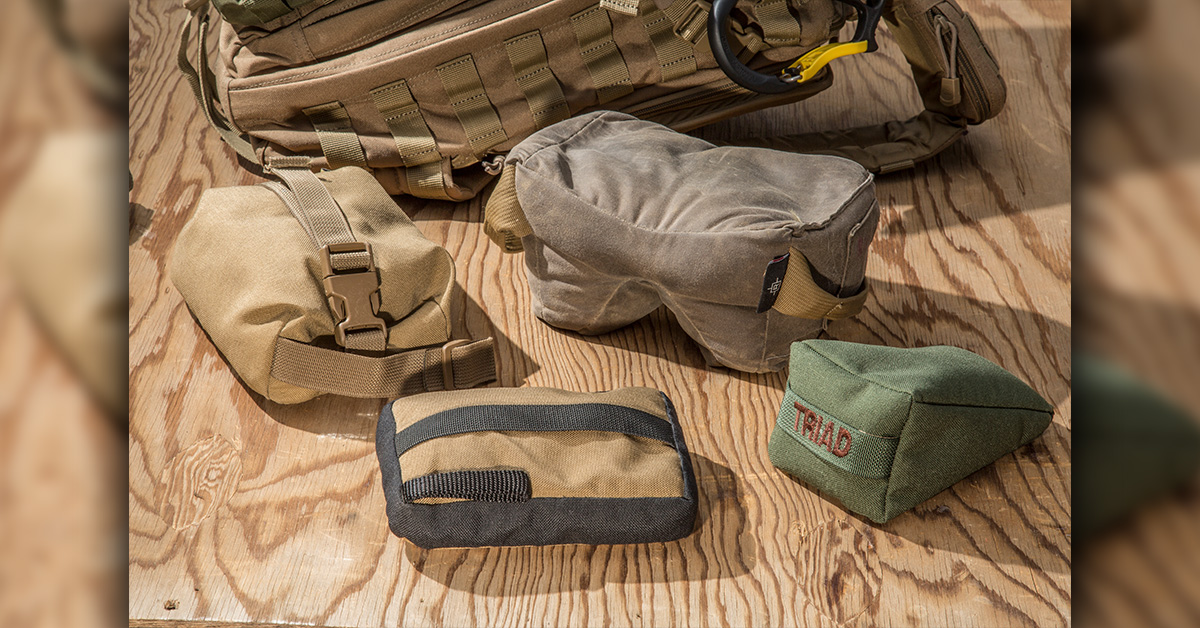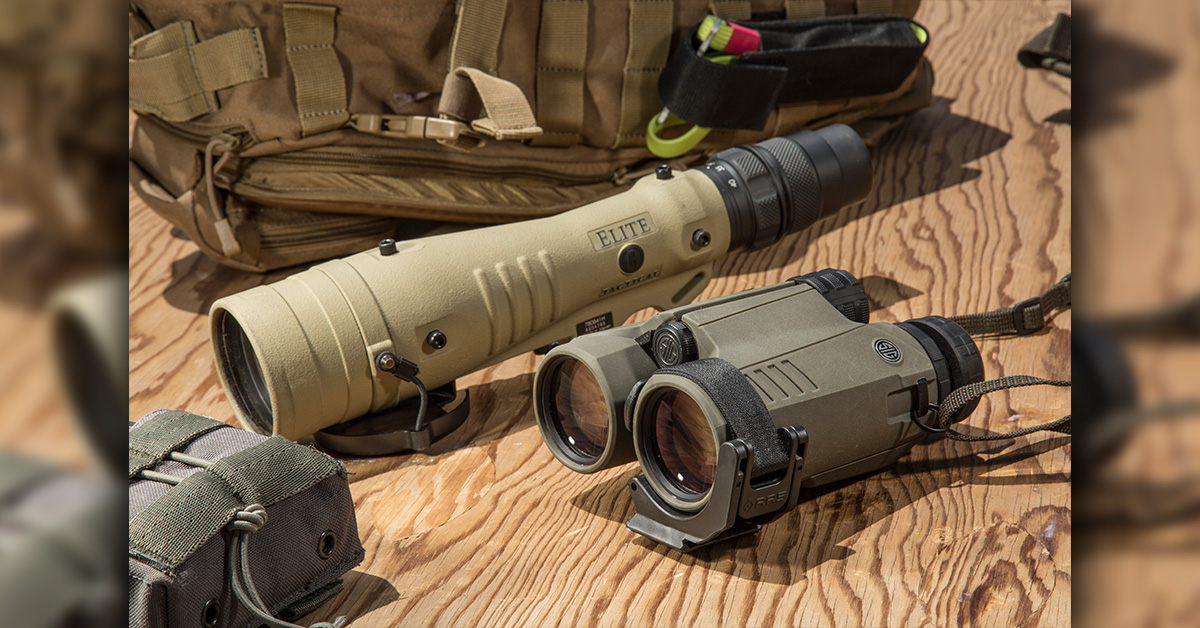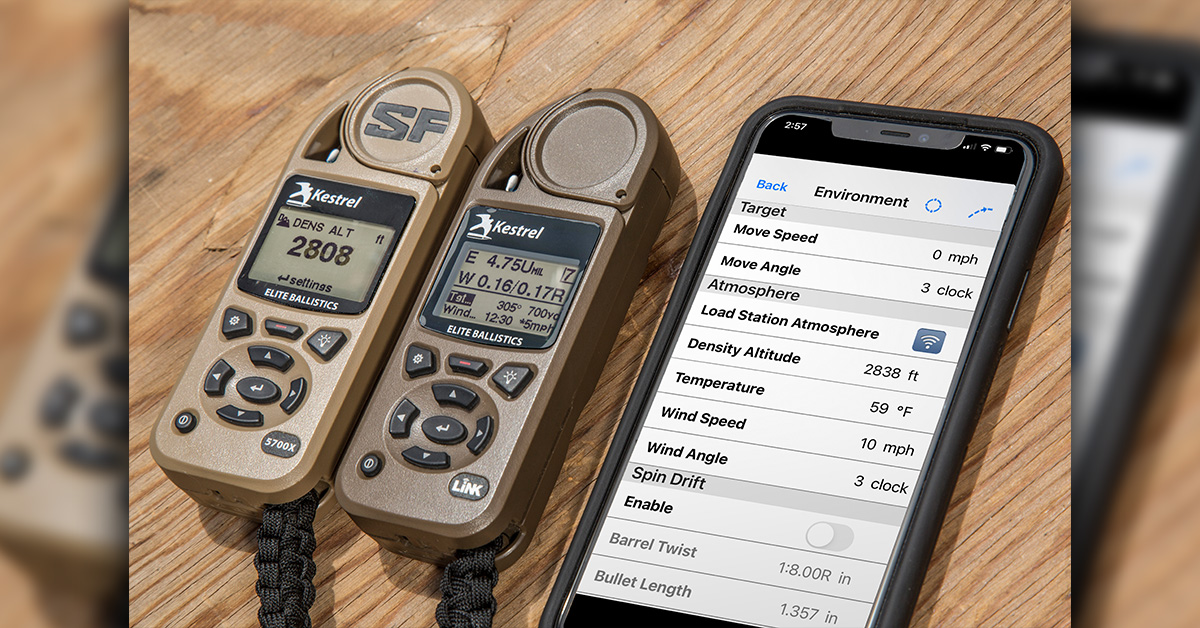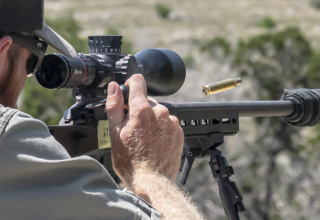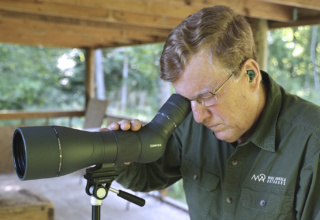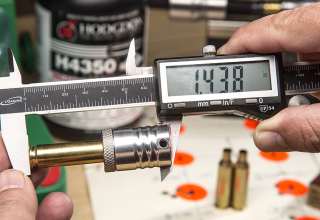If you are ready to kick your long distance shooting up a notch, here is a rundown of the gear you’ll want
by Alfredo Rico
Long range fever has hit many of the shooting groups I participate in. Whether it’s hunting, competition shooting, or simply a skills challenge, many shooters want to go long and are buying rifles that are tuned for long range shooting. Owning a good rifle, optic, and bipod is a start but there’s more to getting first round hits down range: the shooter must also be capable. The farther you shoot the more stability and reading the environment matters. The following are must-have items that will help make shooting long range more successful.
Bubble Level
When mounting a scope to a rifle, we know the reticle should be level, but when you’re behind the scope and shooting, how can you tell if your reticle is level? Leaning target stands or a hilly terrain can fool you, so it’s a good to not rely on intuition. Adding a bubble level and leveling it to the reticle takes the guesswork out of it. This is important because the path of the bullet falls perpendicular to the earth even if your rifle is canted 10-degrees. At short distances, the difference may be minor but at 1,000 yards, a reticle that is canted 2.5 degrees may land .5 Mil from the center of the target. That can be equivalent to underestimating the wind by four mph or more and you’ll end up with a huge miss.
Most bubble levels are a liquid-filled vial with a bubble or ball. Companies like Vortex, David Tubb, and Accuracy 1st offer these types of levels. Long Range Arms also makes the Send iT electronic level, but the goal is the same. Some bubble levels are mounted to the top rail or scope ring and some bubble levels are built into the scope rings/mount or mount on the rifle. Whichever way it’s mounted, it should be visible to the non-shooting eye when you are behind the scope in the shooting position so you can correct the cant while looking through the scope.
Bag Support
Stability is king when it comes to shooting short or long range. The less the rifle moves the more accurate and precise your hits will be. This is where a bipod comes in handy, but you will run into scenarios where a bipod can’t be used, and you will have to rest the forend on a platform. Most stocks have a hard and narrow forend, making them slip when placed against a hard surface like a tree branch, fence, or barricade. Using a bag here will help cradle the forearm and widen its footprint to minimize movement.
If shooting prone, using a rear bag for buttstock support accomplishes three things: it raises the buttstock so you can get in a comfortable shooting position, it provides a larger surface area than using your hand or arm as support, and it can be squeezed to finetune elevation.
Bags come in many shapes and sizes, so it can get overwhelming trying to find the right bag. To determine the bag or bags you need, you must decide what you will be doing with them. For hunting, a backpack can be used for front or rear support. Carrying a small rectangular support bag is highly useful when a backpack is too bulky or heavy to use effectively. The small bag can also perform double duty as a front or rear support.
When hunting, I carry a Short Action Precision Lightweight Bag that has an ultralight fill. Its weight is negligible and can be hung off a backpack. It has come in handy as a front support, where I had to rest the forend on a rock, tree, or a blind’s window shelf. I’ve also used it as a rear support when a backpack was too large and for elbow support in tough shooting positions.
For precision rifle matches, where shooting from improvised props like barricades, and fence posts is the norm, bags such as the Armageddon Gear Shmedium Mid-sized Gamechanger and Wiebad Fortune Cookie are highly popular for their multitude of uses. These bags are designed to be draped over barricades and posts to provide a lot of stability; they can be used as rear support bags, too. There are lightweight and heavy versions of these bags. The lightweight ones are much easier to carry but the heavy ones stay in place more effectively due to their weight. There are ton of other bags for this sport, but these two bags are the best starting point.
Laser Range Finder
Knowing the distance to the target is necessary whether hunting, shooting for fun, or competitive shooting. Underestimating a target distance, especially while hunting, can lead to missing your only shot or, worse, wounding an animal. If you’re shooting long range for fun, it’s imperative to know your distances so you can create an accurate range card. In competition shooting, it maybe a little less important if all the targets are a known distance, but it is still useful to have one if the distance is known but you must shoot at it from an oblique angle that puts you farther away from the target.
There are many affordable rangefinders on the market from Bushnell, Vortex, Sig Sauer, and Leupold. The pricier rangefinders like the Leica 7×24 offer more precise measurements at longer distances. Get one that has a range well beyond the shooting distance you plan to shoot.
Binoculars or Spotting Scope
There’s a saying that the best shooters are the best wind readers. They are also the ones who spend a lot of time behind binoculars or a spotting scope learning how to read the wind. Spending time behind glass and calling wind for a shooter will teach you a lot about the wind. You’ll find that sometimes the best information is near the target, sometimes it’s closer, and sometimes it’s a mix. At one of the ranges that I shoot at, the wind that provides the best read is different at 200-600 yards than at 800-1,000 yards.
There are many good binoculars available from the same people who make rangefinders. If you are seeking the best optical quality Leica and Swarovski are the leaders in this category. Many of them have binoculars with rangefinders and ballistic engines built in. Ultimately, this combo is the best way to go since you can range a target or animal and receive the elevation and windage hold. This saves time from going back and forth between two devices.
Ballistics Solver
A ballistics solver is a powerful ally when shooting long range. It will give you your holds for the distance you are shooting and take into consideration the effects of environmental factors. Much can be done with a phone app ballistic solver and there are many good ones, including Applied Ballistics, Hornady 4DOF, Ballistics ARC, Ballistic AE, Shooter, and Strelok Pro. You can’t go wrong with any of these.
Your best bet though is a Kestrel 5700 Ballistics Weather Meter. This is a standalone ballistics solver and weather meter that allows you to gather the most critical data — the environmental conditions at your location. Getting weather data from an app will provide information from the nearest weather station and may get you in the ballpark, but your specific elevation and wind speed and direction may be different. Reading the wind is the trickiest part of shooting long range, and the Kestrel gives you the tools to gather wind speed and direction at your location, which may be the only place you can get an accurate reading. Other notable features of the Kestrel 5700 are Truing, Range Card, Gun Manager, and the Accuracy 1st Ballistic menu.
There are different models to choose from, some are dedicated to Hornady and Ruger, but my favorite is the model with the Applied Ballistics engine because it can share data with stand-alone laser rangefinders and range-finding binoculars that have the Applied Ballistics engine built-in. There are many devices like this on the market that give you more compatibility choices. These devices can be tethered to the Kestrel and receive its ballistics data, including the wind. This means that you can keep your eyes on the target, range it, and receive your holds.
When shooting long range, you want to increase your chances of a first-round hit on target. To do this, you want to be level, stable, and have good shooting data. The gear above will help but you must also put the time in to learn to how to use them effectively. Ultimately, the accuracy and precision of your rifle hinges on you doing everything right as a shooter.
- Precision Rifle Shooter Must-Haves - June 6, 2022
- Reloading for Precision Rifles - March 10, 2022
- Field Test: Mossberg’s MVP Rifles - March 2, 2020

